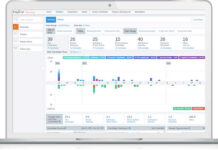
While employers give increased attention to attracting and managing part-time employees, a report from the Conference Board suggests that the growth of “non-traditional” workers, such as contingent and gig workers has, in fact, barely grown since the mid-1990s.
That’s particularly striking here in the HR technology world, since the impact of online labor platforms seems to be increasing, at least on the surface. Where once these marketplaces focused on drivers, writers, art directors and the like, today we see services like BetterUp, which offers leadership development expertise, and Clora, which matches life sciences companies to experts in bioscience, clinical QA and clinical development strategy.
Even if that’s so, the Conference Board contends, such platforms remain “a tiny share of the labor market outside the transportation sector.” (Think Uber and Lyft.)
The report, Contrary to the Hype—Real Trends in Nontraditional Work, says contingent work is being held back by specific dynamics in the employment world including the tight labor market, a slowing pace of outsourcing, internal operational challenges and federal policies aimed at encouraging “traditional” work. It based its estimates on contingent-workforce data from the Bureau of Labor Statistics.
Specifically, the report cites the BLS 2017 Contingent Worker Supplement, which said the share of workers who primarily made their living through nontraditional work was no different in 2017 than it was in 1997. Compared with 2005, the share declined.
“The perception about rapid growth of the nontraditional workforce is not supported by hard data,” said Gad Levanon, the Conference Board’s chief economist of North America. Online labor platforms, he suggested, were largely behind the gig economy’s “hype.” However, outside of transportation, “these platforms represent a tiny share of income and total hours worked in the U.S. economy.”
Levanon allowed this situation may change as more employers discover these platforms and their ability to provide seasonal companies with additional workers on demand. In addition, the report suggests the number of contingent workers could increase as online labor market platforms–which we think of as “marketplaces”–continue to evolve.
Contingent Work Appears in More Areas
We think it’s worth considering that the Conference Board’s conclusions may not take into account some recent trends. As we’ve noted, the report said online labor platforms tend to focus on limited areas of the workforce—such as computer support, graphic designers, writers and office-support positions—and low-paid occupations that usually perform non-core functions, are seasonal, don’t require institutional knowledge and involve well-defined tasks where output is easily measured. It did say these marketplaces also provide talent that possesses “emerging skills or unique, hard-to-find skill sets.”
Marketplaces for more advanced talent are relatively new. Clora was founded in 2016, while BetterUp and Catalant—which connects businesses with experts in strategic planning, financial modeling and project management—began operations in 2013. UpWork, which is more akin to the platforms the Conference Board describes, was founded in 2015 with the merger of Elance and oDesk, both older companies. (Wonolo—which places temporary workers in general labor, warehouse jobs and the like—began in 2013.)
Those dates or notable because the Conference Board contrasts its data with a survey by the labor economists Lawrence Katz and Alan Krueger, which found the share of alternative work arrangements rose from 10 to 16 percent between 2005 and 2015, the same period during which many of these labor marketplaces were getting on their feet, if they were even a gleam in an investor’s eye. In other words, the Board may not take into account gathering momentum.
Data aside, HR tech vendors say the amount of money enterprises spend on non-traditional workers is significant. Earlier this year, executives at SAP Fieldglass told us that in their experience, 44 percent of organizations’ total labor spend is on external workers. That leads us to wonder if the Conference Board’s report is emphasizing headcounts over dollar expenses.
Underestimating the Enterprise
The Conference Board argues that the “current model of work in the U.S. is not broken, and therefore the expectation of a dramatic change from traditional to mostly nontraditional work arrangements is not realistic and doesn’t show signs of occurring.” Having read the BLS Contingent Worker Supplement, and fully admitting we’re not data analysts, we believe you have to dig awfully deep, and then do some stretching, to come to that conclusion.
In addition, we believe the Conference Board underestimates the efforts labor marketplaces are putting into serving enterprise customers. (It calls their “inability … to cater to enterprise-level needs” the greatest hurdle they face in growing.) However many of the platforms offer features designed around large-company procurement needs, and Clora, BetterUp and even UpWork all claim brand-name customers.
Despite our skepticism about the report, we do agree with one important point: Despite impediments to growth, it says, “the more pertinent question about online labor platforms is not how pervasive they can become. Instead, it is how companies might use them to target specific roles or occupations, both locally and internationally, as part of a broader outsourcing strategy.”
As the workforce becomes more fluid, labor marketplaces are bound to have a role to play.
Sign up for our newsletter here.
Image: iStock















